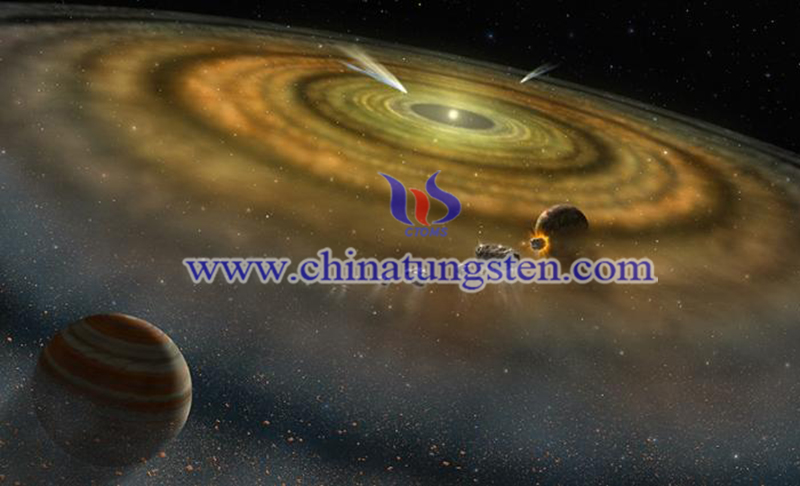Solar System Found Less Than 200,000 Years Old Via Measuring Mo Isotopes
- Details
- Category: Tungsten's News
- Published on Monday, 14 December 2020 22:42
A group of Lawrence Livermore National Laboratory (LLNL) scientists looking at Mo isotopes of the element molybdenum found on meteorites, and found our Sun and Solar System formed over the short time of 200,000 years. In the past, scientists thought that the Sun took over millions of years to form, but the facts are faster than imagined. This new paper was published in Science.
The material that makes up the Sun and the rest came from the collapse of a large cloud of gas and dust about 4.6 billion years ago, and the rest of the collapsed part forms a protoplanetary disk. Previously estimated that the time of the formation was mainly based on observations of other newborn star systems similar to the Solar System. It was calculated that it would take millions of years for the collapse of the cloud cluster and the accumulation of the central mass to fusion with the ignitable core.
According to the latest research by the LLNL team in the United States, the Solar System may take shape rapidly in less than 200,000 years. If compared with the human life span, it can be said that the Solar System is in the clouds. The group was born 12 hours after the pregnancy.

The oldest known objects in the Solar System are calcium-aluminum-rich inclusions (CAIs), most of which were formed near the young sun 4.567 billion years ago with a temperature of 1,027°C. They provide a direct record of the formation. The majority of CAIs formed 4.567 billion years ago, over a period of about 40,000 to 200,000 years. Therefore, the age of calcium-aluminum-rich materials is usually regarded as the age.
Therefore, analyzing the calcium and aluminum rich content in carbonaceous chondrites may further study the formation. The LLNL team then measured the Mo isotopes and trace elements in various calcium and aluminum rich samples, including those on Earth.
The largest carbonaceous chondrite, "Allende meteorite," was found to be evenly distributed in isotopes, which means that calcium and aluminum-rich materials were also evenly distributed throughout the protoplanetary disk. Researchers believe that during this period It must also happen to be the stage where the sun transitions from the protostar to the pre-main sequence so that these substances can spread evenly.
"Via the Mo isotopes and trace element measurements, scientists found the distinct Mo isotopic compositions of CAIs cover essentially the entire range of material from the protoplanetary disk. In other words, CAIs potentially record the entire history of in fall from the molecular cloud to the Sun", explains Thorsten Kleine of the Institute for Planetology.
And since scientists know when and how long it took CAIs to form, this provides a way to date the accretion of the Sun. To put the rapidity of the birth of the Solar System in human terms, this means pregnancy would last about twelve hours instead of nine months. It turns out that the birth of the Sun was a relatively quick process after all.
| Molybdenum Supplier: Chinatungsten Online www.molybdenum.com.cn | Tel.: 86 592 5129696; Fax: 86 592 5129797;Email:sales@chinatungsten.com |
| Tungsten News & Prices, 3G Version: http://3g.chinatungsten.com | Molybdenum News & Molybdenum Price: http://news.molybdenum.com.cn |



 sales@chinatungsten.com
sales@chinatungsten.com